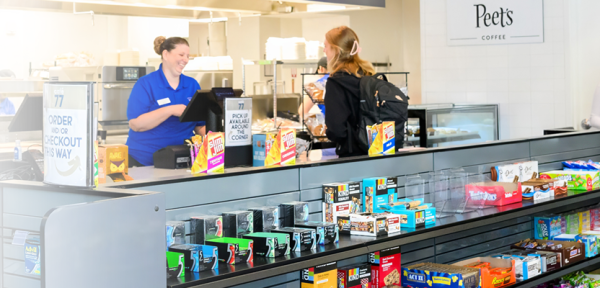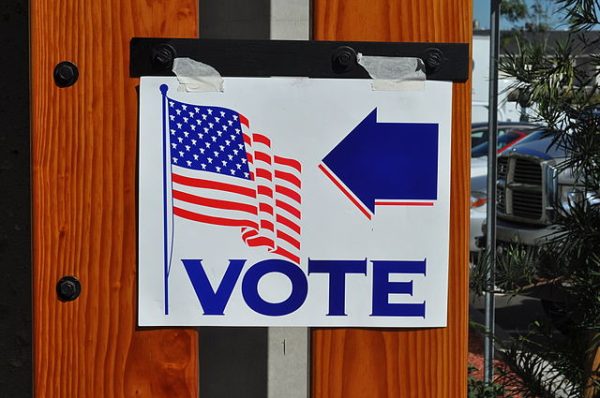D-Hall should display calorie content with food
Hayley Huber, ’23, makes the case that knowing calorie count can help with portion size in eating on campus
February 11, 2020
One out of five U.S. residents meet the daily recommended physical activity requirements, according to the Center for Disease Control and Prevention.
Despite Campus Health articles that encourage readers to stay active and try simple exercises at home, people who aren’t already regularly in the gym aren’t likely to begin going any time soon. So, what can we do?
The best way to control your weight, be it gaining, losing or maintaining, doesn’t happen at the gym at all. It actually comes down to what you eat: calories in versus calories out. If you’re consuming more calories than you’re burning, you will gain weight. If you consume less calories than you burn, you’ll lose weight, and if you eat and burn the same amount of calories, you’ll stay about the same. Keep in mind, though, there are several other factors that contribute. But on a very basic level, weight has to do with caloric balance.
How do you know your caloric level? Unless you’re making drastic changes to your daily routine, you won’t see any changes on the scale for several weeks. This applies to both gaining and losing weight. It can be hard to tell what your calorie balance is without counting, but once you have a few pieces of information, you’ll be fast on your way to getting your dream body.
The first thing to know is your basal metabolic rate (BMR), or how many calories your body burns a day at rest. Given my small frame, I burn about 1,370 calories per day. However, I also weight train and practice cardio five days a week. My real daily expenditure is closer to 1,900 to 2,100 calories per day. There are plenty of online calculators to use to figure out your BMR.
The second thing you need to know is how many calories you’re eating each day. Nowhere on campus, besides on commercial food items, can we find anything with a numerical indication of calories. As a result, there’s no real way to count how many calories we consume. This lack of information is one of the biggest contributors to the freshman five, 10, 15, 20, or whatever you may have experienced. We can make ballpark guestimates at best, but can’t be certain of our daily consumption.
Now, not all calories are created equal, and if you want to see real results, you’ll need a lot more information about nutrition, diet and exercise than I have room to write. Nevertheless, knowing how much you consume is a great start. If students saw how many calories were in the potatoes au gratin, BLT pizza, or brownie Whoopie pies, perhaps they would choose a healthier option. (I don’t mean to attack any of these foods. I love them myself).
On the other hand, Washington and Lee has many talented athletes who burn somewhere around 3,000 to 9,000 calories a day (depending on if their sports is in season) who need to ensure they are eating enough to maintain or even gain weight. Being able to quickly count how many calories you get per meal at D-Hall or any other place on campus makes it significantly easier to stay in shape.
Some may argue that displaying calories could trigger those with current or previous eating disorders or discourage eating all together. But calories are posted everywhere! Commercial food products, boxes at Kroger, cans of alcoholic beverages and a growing number of restaurants nationwide post calories. In the real world, calories cannot be avoided and neither can the facts of good health.
In fact, many people, particularly women, who are trying to lose weight do so by putting themselves into extreme caloric deficits. Not only is this practice bad for long-term health, it is also an ineffective way to lose and keep off weight because of how it affects your metabolic response. Many people don’t realize that they can and should actually be eating a lot more calories than they are. With posted calories in campus dining, coming to this conclusion would no longer be difficult.
There is also the concern of accurate calorie displays. No two D-Hall servers give the same amount of food. The solution to this problem is virtually unattainable, but if we had decent estimate per serving, we could better control how much we ask for and how much we eat.
In a GroupMe survey I conducted of 76 first-year students, 45 percent want to see caloric content in campus dining. Twenty-one percent preferred that we don’t change the status quo, and 34 percent don’t care what happens.
People who care about their wellness and want to improve their diet should not be deprived of the opportunity to know what they’re eating. The sooner people start taking care of their bodies, the longer, healthier and happier their lives will be.













alexa Rossy • Feb 25, 2020 at 5:41 pm
Hi Haley, Thank you
well said and well fed!!!!
A timely message since the latest prediction is that 50% of the US population will be obese in a few years…and guess who pays for all the illnesses obesity causes??/-we do
What are your school vending machines dispensing??? anything healthy? I doubt it.
Are there any classes in nutrition at your college??? maybe they should be mandatory for Freshman….
Stay well and congratulations on another great article. Keep ’em coming.
hugs,
Alexa Rossy